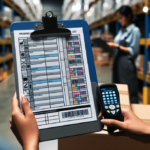Understanding Amazon FBA Fees: What You Need to Know
If you're considering selling products on Amazon, you've likely encountered Amazon FBA (Fulfillment by Amazon). This popular service allows sellers to store their products in Amazon's fulfillment centers, with Amazon handling all aspects of the order fulfillment process, including picking, packing, and shipping orders to customers. In this article, we'll provide a comprehensive analysis of Amazon FBA fees, incorporating the latest data and insights to help you make informed decisions for your business.
What is Amazon FBA?
Amazon FBA leverages Amazon's extensive logistics network to store and ship your products efficiently. Sellers send their inventory to Amazon's fulfillment centers, where products are stored until purchased. Upon a sale, Amazon takes care of picking, packing, and shipping the order, as well as handling customer service and returns.
One of the most significant advantages of using Amazon FBA is eligibility for the Amazon Prime program. Prime members enjoy free two-day shipping on eligible products, which can significantly enhance your product’s appeal and visibility.
Moreover, Amazon FBA provides customer service support on your behalf. If a customer encounters an issue with a product, they can contact Amazon directly, which not only improves customer satisfaction but also reduces your administrative burden.
How Does Amazon FBA Work?
Setting up your FBA account involves creating product listings and shipping your inventory to an Amazon fulfillment center. Amazon then stores your products until a customer places an order. The fulfillment process includes:
- Picking: Selecting the ordered items from inventory.
- Packing: Packaging the products securely for shipment.
- Shipping: Delivering the package to the customer.
- Customer Service: Handling inquiries, returns, and refunds.
Amazon charges a fee for each sale to cover these services. Understanding these fees is crucial for pricing your products effectively and maintaining profitability.
Additionally, Amazon FBA facilitates entry into international markets, allowing you to expand your reach without the complexities of managing international shipping and customs.
Benefits of Using Amazon FBA
Amazon FBA offers a multitude of benefits:
- Time-Saving: Amazon handles all fulfillment logistics, allowing you to focus on other aspects of your business.
- Global Reach: Access to Amazon’s international fulfillment network helps you reach customers worldwide.
- Cost Efficiency: Benefit from Amazon’s negotiated shipping rates to reduce your overall shipping costs.
- Enhanced Visibility: Products enrolled in FBA are often prioritized in search results and are eligible for Prime, increasing their visibility.
- Improved Customer Service: Amazon manages customer inquiries and returns, enhancing customer satisfaction and trust.
According to a Statista report, Amazon FBA sellers accounted for a significant portion of Amazon’s third-party sales, highlighting the effectiveness of the program in driving sales and business growth.
Types of Amazon FBA Fees
Amazon FBA fees are categorized into several types:
- Fulfillment Fees: Charged for picking, packing, and shipping products to customers.
- Storage Fees: Based on the volume (cubic feet) occupied by your inventory in Amazon’s warehouses.
- Long-Term Storage Fees: Applied to inventory stored for more than 365 days.
- Removal Fees: Incurred when you remove inventory from fulfillment centers.
- Return Processing Fees: Charged for processing returns of your products.
- Advertising Fees: Related to Amazon’s advertising services to promote your products.
Fulfillment Fees Explained
Fulfillment fees are determined by the size and weight of your products. As of 2023, Amazon's fulfillment fees range based on product dimensions and weight tiers. For example:
- Standard Size: Products weighing less than 1 lb might incur a lower fee compared to heavier items.
- Oversize: Larger or heavier products have higher fulfillment fees.
It's essential to review Amazon’s official Fulfillment by Amazon Fee Schedule for the most up-to-date information.
Additionally, fulfillment fees are just one component of the overall cost structure. Sellers should also consider storage and other associated fees to maintain profitability.
Storage Fees Explained
Storage fees are calculated based on the volume of your inventory stored in Amazon’s fulfillment centers. These fees are charged monthly and vary between standard and peak seasons. For instance:
- January - September: Lower storage rates apply.
- October - December: Higher storage rates due to increased demand during the holiday season.
Proper inventory management is crucial to minimize storage costs. Regularly reviewing your inventory and forecasting demand can help prevent excess storage fees. Utilize Amazon’s Inventory Health Reports to monitor your stock levels effectively.
Long-Term Storage Fees Explained
Amazon imposes long-term storage fees on inventory that remains in fulfillment centers for over 365 days. These fees are assessed twice a year, in February and August.
To avoid these fees:
- Regularly Audit Inventory: Use tools to track inventory age and identify slow-moving products.
- Implement Inventory Reduction Strategies: Offer promotions or discounts to expedite sales.
- Leverage Amazon’s Removal Services: Strategically remove or liquidate excess inventory.
For more details, refer to Amazon’s Long-Term Storage Fee Policy.
Removal Fees Explained
Removal fees apply when you request Amazon to remove your inventory from their fulfillment centers. Fees vary based on:
- Product Size and Weight: Larger and heavier items incur higher fees.
- Method of Removal: Standard removal versus bulk removal may have different costs.
Notably, if the removal is due to Amazon’s error or for safety/legal reasons, fees may not apply. Bulk removal orders (typically 100 units or more) can qualify for discounted rates, potentially saving up to 50% per unit.
Review Amazon’s Removal Fee Structure for comprehensive information.
Return Processing Fees Explained
When a customer returns a product sold through FBA, Amazon charges a return processing fee. This fee covers the cost of inspecting, repackaging, and restocking the returned item.
Understanding the return rate of your products can help in forecasting and managing these fees effectively. Implementing high-quality product descriptions and imagery can reduce return rates by setting accurate customer expectations.
Advertising Fees Explained
Amazon offers various advertising solutions to help promote your products, such as Sponsored Products, Sponsored Brands, and Sponsored Display ads. Fees are generally based on a cost-per-click (CPC) model, meaning you pay each time a customer clicks on your ad.
Effective advertising strategies can significantly increase your product visibility and sales. Utilizing data analytics and A/B testing can optimize your ad spend for better ROI.
For more insights, explore Amazon’s Advertising Help Center.
Other Potential Fees to Be Aware Of
In addition to the primary fees, Amazon FBA sellers should be aware of other potential costs, including:
- Product Labeling Fees: If your products require specific labeling, Amazon can handle this for a fee.
- Inventory Placement Fees: Charges for directing inventory to specific fulfillment centers.
- Policy Compliance Fees: Penalties for not adhering to Amazon’s seller policies or performance targets.
Staying informed about Amazon’s fee structures and policies is essential to avoid unexpected charges.
How to Calculate Your Amazon FBA Fees
Calculating Amazon FBA fees involves understanding various components such as fulfillment, storage, and additional service fees. Amazon provides tools to assist with this:
- FBA Revenue Calculator: Helps estimate profitability by factoring in FBA fees.
- Manage Inventory Reports: Offers detailed cost breakdowns for each product.
Accurate fee calculation is vital for setting competitive pricing and ensuring sustainable profit margins.
Tips for Reducing Your Amazon FBA Fees
Minimizing Amazon FBA fees can significantly enhance your profitability. Here are some strategies:
- Optimize Packaging: Use appropriately sized packaging to reduce dimensional weight and fulfillment fees.
- Inventory Management: Maintain optimal inventory levels to avoid excessive storage and long-term storage fees.
- Bundling Products: Combine products to reduce the number of units stored and shipped.
- Leverage Multi-Channel Fulfillment: Use Amazon’s services to fulfill orders from other sales channels, potentially reducing overall fees.
- Negotiate with Amazon: For high-volume sellers, negotiating fee reductions based on sales or shipping volume may be possible.
When to Consider Alternative Fulfillment Methods
While Amazon FBA offers numerous benefits, alternative fulfillment methods might be more suitable in certain scenarios:
- Unique Packaging Requirements: If your products require special handling or packaging that Amazon cannot accommodate.
- High-Value or Fragile Items: Products that need extra security or specific shipping conditions.
- Control Over Logistics: Maintaining in-house fulfillment to exert greater control over the shipping process and customer experience.
- Cost Efficiency: In some cases, self-fulfillment may be more cost-effective, especially for low-volume sellers.
Assessing your business needs and comparing the costs and benefits of different fulfillment options is crucial for strategic decision-making.
Conclusion: Understanding and Optimizing Your Amazon FBA Fees
Grasping the intricacies of Amazon FBA fees is essential for any seller aiming to maximize profits and sustain business growth on Amazon. By meticulously calculating fees, implementing cost-reduction strategies, and staying updated with Amazon’s policies, you can optimize your FBA operations effectively. Whether you're a novice or an experienced seller, continual monitoring and strategic adjustments will help you navigate the complexities of Amazon FBA and achieve long-term success.
For further assistance, consider consulting Amazon’s official resources or seeking advice from industry experts to ensure you’re leveraging FBA to its fullest potential.




















